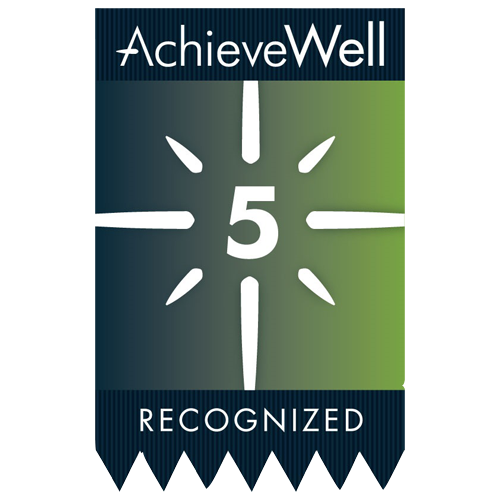Health Benefits for
Mental Health, Blood Pressure, and Diabetes
For too long, employers have thought of population health and wellness programs as a “soft benefit.” The data, however, make it clear that investing in population health actions can have a big payoff to a company’s bottom line. This is because a well-crafted and executed population health plan addressing the big 3 chronic health conditions plaguing many workforces (mental health issues, blood pressure problems, and diabetes) can lower claim costs, lower an individual’s expenses, and improve workforce health, which means better morale, higher productivity, and less absenteeism.
Data-Driven Population Health Programming by LHD
The game-changer for making a real difference in the population health of your company’s workforce is data and the analytics technology needed to reveal risks and trends, as well as to understand what wellness programs get results. At LHD, we helped establish Vital Incite back in 2013 to take data analytics to a whole new level and leverage data into actionable insights about population health. The initiative has proven over and over how improving employee health can improve your company’s bottom line. Vital Incite is about using data to help employers understand the best way to deploy health benefit resources and programming to improve population health while also eliminating wasteful spending that doesn’t get results.
How the CDC Positions Workforce Health
It’s important to recognize how our national public health agency, the Centers for Disease Control and Prevention (CDC) positions the importance of workforce wellness:
“Chronic diseases and related lifestyle risk factors are the leading drivers of health care costs for employers. Chronic conditions and unhealthy behaviors also reduce worker productivity. Five chronic diseases or risk factors—high blood pressure, diabetes, smoking, physical inactivity, and obesity—cost US employers $36.4 billion a year because of employees missing days of work.”
While the CDC notes two of the “Big 3” we think are especially important, the one the CDC didn’t mention is mental health. While the level of mental health challenges is something that can rise and fall over time depending on what’s happening locally, nationally, and globally, we’re highlighting mental health because of the extreme stress and anxiety caused by the SARS-CoV-2 global pandemic (otherwise known as the novel coronavirus and the COVID-19 disease it causes). The impacts of such a huge public health emergency will be felt in workplaces long after it’s over.
We highlight the Big 3 because effectively addressing them can have a positive cumulative effect that creates a virtual cycle of improved health and productivity in the workplace. If you address the root causes of things like high blood pressure and diabetes, you’ll be helping employees eat better and exercise more, the benefits of which will extend far beyond getting those chronic conditions under better control, including improved mental health.
Addressing Mental Health in the Workplace
Even in the absence of something as challenging as a global pandemic, the CDC also notes “…work stress is the leading workplace health problem and a major occupational health risk, ranking above physical inactivity and obesity.” In other words, employers who want to get serious about reaping the rewards of wellness programming for improved population health and employee productivity must address mental health in the workplace.
Back in 2016 the National Institute of Mental Health noted that nearly one out of every five adult Americans reported some kind of mental illness affecting their lives, and 71% of adults reported at least one symptom attributable to stress, whether it was headaches, feeling overwhelmed, anxiety, and so on. The tumultuous events of 2020 certainly didn’t make any of those figures go down. When you consider the psychological impacts of social distancing policies, mandatory lockdowns, isolation periods, anxiety about getting sick, suspension of productive activity, loss of income, and fear of the future, it’s easy to see why many have predicted an inevitable increase in mental health issues such as anxiety, depression, post-traumatic stress disorder (PTSD), and sleep disorders. Those impacts won’t go away overnight, and they will come into play in workplaces across the nation.
As these mental health issues affect employee performance, so too do they affect the bottom line of your business or organization. And the mental health challenges workers face often go unreported and untreated. Workplace wellness programming aimed at mental health and stress management can have a profoundly positive impact on both employees and employers alike.
Addressing High Blood Pressure in the Workplace
The American Health Association (AHA) has a lot to say about high blood pressure, often called the “silent killer” because of the lack of outward noticeable symptoms. The AHA says something like 103 Americans have high blood pressure. That’s half of the adult population. And the impact on employers is real. The AHA says on average high blood pressure is costing every employer around $518 a year per employee. High blood pressure is big risk factor for cardiovascular disease, which in and of itself costs employers an additional $1,100 in lost productivity per employee. Not to be morbid about it, we also have to note that employees with high blood pressure are four times more likely to die of a stroke.
Many employers also aren’t aware that the guidelines for what’s considered high blood pressure (also referred to as hypertension and hypertension disorders) were changed a number of years ago. The old guideline for defining high blood pressure was 140/90. Nowadays, a top number (systolic blood pressure) in the 120-129 range is considered elevated, and a reading in the 130s is considered stage 1 hypertension.
LHD Health Coaches can make all the difference in working with your company on a proactive, data-driven plan to address high blood pressure in your workforce. Programming can include worksite blook pressure screenings, one-on-one education and lifestyle counseling with clinical referral and follow-up as needed.
Addressing Diabetes in the Workplace
The American Diabetes Association (ADA) has been sounding the alarm for years. We’re in the grips of a true diabetes epidemic. Every 21 seconds an American is diagnosed with diabetes. The ADA also estimates that something like one out of every four health care dollars is spent on people with diabetes. A Gallup study in 2017 indicated that workers with diabetes miss an extra 5.5 days of work a year because of their chronic condition. This adds up to millions upon millions of missed days of work because of diabetes. Health care claims from diabetes are a major driver of increasing health care premiums. The overall cost of diabetes to U.S. employers is huge.
The kind of diabetes we’re talking about here is type 2 diabetes, which makes up 90–95% of all diagnosed cases of diabetes. Diabetes can lead to a host of other medical conditions, including heart disease, stroke, blindness, kidney disease, neurologic disease, leg ulcers, and even amputations.
Part of the challenge of type 2 diabetes is that it develops slowly over months and years, which is why screening programs for early detection are critical and should be a focus of workplace population health assessments. Body mass index (BMI) and obesity are major risk factors, which naturally makes nutrition/diet and physical exercise important elements of workplace wellness programs aiming to address diabetes. Blood glucose levels are also another important indicator as certain levels of glucose are considered prediabetic and could lead to developing type 2 diabetes.
Once again, LHD Health Coaches can help with proactive interventions aimed at reducing the risk of developing diabetes among at-risk employees through on-site screenings, one-on-one lifestyle coaching, and clinical referrals when warranted.
LHD: Your Partner for Population Health Benefits and Programs
In addition to high-performing health benefits plans, data-driven strategies to invest in population health programs and benefits that get results is another way LHD works on behalf of employers to help them do right by their employees while at the same time making good business decisions and controlling costs.
There is a strong case to be made for addressing population health through three major approaches: wellness as a perk, participation driven wellness, and results and outcomes driven wellness. LHD provides insights on all three, although it may turn out that one is better suited to your organizational culture, objective, and strategies than another. What we can say with confidence is this: Whatever your needs may be, we can customize a solution to fit those needs. Learn more about our wellness program management services by calling 371.751.7049 or emailing to lhdbenefits@lhdbenefits.com to start the conversation.





